The fifth season of Kuwaiti-Polish archaeological explorations in Northern Kuwait – autumn 2010
The Bahra 1 Settlement Site
Dates: 24 October – 8 December 2010
Team:
Prof. Piotr Bieliński, director of the mission, archaeologist (Institute of Archaeology, University of Warsaw)
Sultan Ad-Duweish, director of the mission, archaeologist (National Council for Culture Arts and Letters, State of Kuwait)
Dr. Anna Smogorzewska, ceramologist (Institute of Archaeology, University of Warsaw)
Dr. Magdalena Żurek, archaeologist (Institute of History, Podlaska Academy)
Dorota Bielińska, archaeologist, documentalist (Polish Academy of Sciences)
Maciej Makowski, archaeologist (Polish Academy of Sciences, PhD candidate)
Marta Mierzejewska, archaeologist (PCMA)
Marta Momot, archaeologist, documentalist (PCMA)
Agnieszka Pieńkowska, archaeologist (PCMA)
Andrzej Reiche, archaeologist, photographer (National Museum of Warsaw)
Agnieszka Szymczak, archaeologist (PCMA)
Urszula Wicenciak, archaeologist (University of Warsaw, PhD candidate)
Marek Woźniak, archaeologist (freelance)
Ewa Parandowska, senior conservator (National Museum in Warsaw)
Hubert Kiersnowski, geologist (Polish Geological Institute)
Thomas Sagory, kite photography
The autumn season of work of the Kuwaiti-Polish mission (October 24 – December 8, 2010) was focused on investigating an Ubaid-period settlement site in the Bahra sub-region of the As-Sabbiya. The work included a geological survey aiming at reconstructing paleomorphology of the region. Apart from this main project, a large tumulus grave SMQ 49 in the Mugheira sub-region, the excavation of which had begun in 2009, was fully explored.
Bahra 1: two sites – one settlement
In 2009, the team began excavating an Ubaid-period settlement at site SBH 38 (for details see Al-Sabiyah in the 2009 Newsletter PCMA), identified a few years earlier by Sultan Ad-Duweish. He had discerned also another site with Ubaid ware surface pottery scatter, code-named SBH 35, only approx. 120 m to the north-east from the first one. After the winter of 2009, at SBH 35 some remains of walls, more Ubaid potsherds, stone tools and shells became clearly visible on the surface. As the material called for urgent registration, during the autumn season of 2010 the surface of the site was cleaned, the architectural remains documented, and the material collected and studied. It became clear then that the pottery from SBH 38 and SBH 35 belongs to the same phases of the Ubaid period. Based upon these similarities, the two sites came to be regarded as sectors of one and the same settlement – Bahra 1. As for spatial connection between the two sectors, it will need to be investigated in the forthcoming seasons.
Landscape and architecture
The SBH 35 sector is located on a small hillock a few meters higher than SBH 38. Some of the walls (or stone alignments) rest directly on the surface of the underlying rock, others abut low, outcropping rocks. It seems that the builders of these structures used natural rock formations to their advantage and fitted the plans of the newly erected structures to landscape features.
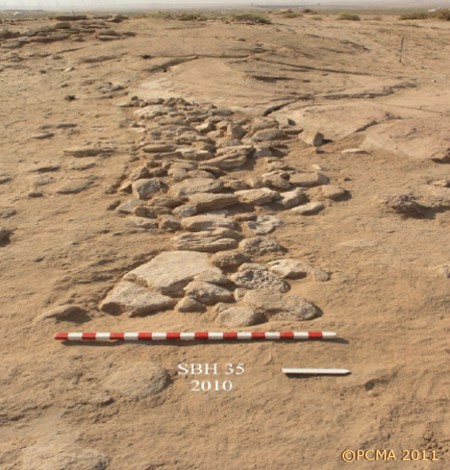
A house thrice renewed
Work in the SBH 38 sector concentrated on studying the development of House 1, first excavated in 2009. At least two major phases (with sub-phases) in its history have been discerned, which can be exemplified by the changes to a large room (locus 34) in the north-eastern part of the building. In the oldest phase (of those known so far), it measured approx. 6 x 3.5 m and was paved with large stone slabs. A square, stone podium stood in the middle of the room.
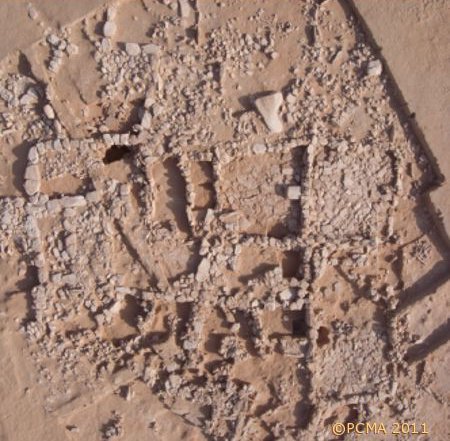
At some point, the room was divided into two almost equal chambers, the eastern of which (locus 27) received a new layer of paving, while the western one (locus 4) had an earthen floor. The “podium” was retained – at this stage it stood by the middle of the eastern wall of locus 4. In yet another building operation a wall cut off locus’s 4 northern part to create a still smaller room (locus 3) with the same podium reused yet again – this time set in the south-eastern corner of the room. The remaining space was used to enlarge a room (locus 18) neighboring locus 4 on the south. Other parts of House 1 also bear traces of rebuilding. In the youngest phase, the house was extended towards the west by the addition of new rooms.
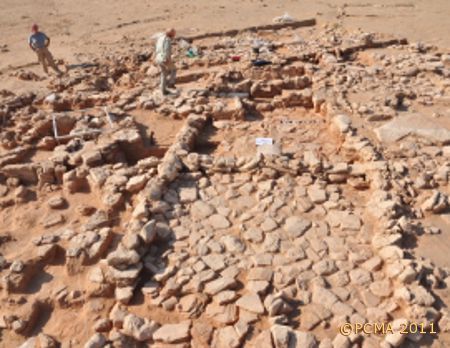
Tiny beads and large jars
A rich collection of small finds from room 34 and its younger phase points to the rooms’ function as a workshop. The finds included, among others, several varieties of shell beads at different stages of production, conical pottery rings (of unknown function) and ceramic discs. They were accompanied by a large quantity of chipped stone material which will be studied next season.
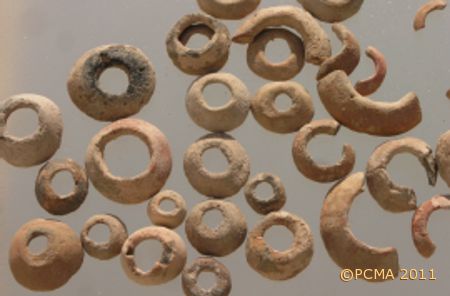
Other interesting objects were recovered from locus 16, where four large vessels were found in situ, set into a floor. They had been partly visible on the surface already prior to exploration and were consequently in an appalling state of preservation. Still, a professional restorer was able to reconstruct their forms as three Ubaid jars and a bowl. The latter had a painted decoration; two jars were plain while the third one was decorated with applied “protrusions” and band(s) of black paint or bitumen.

The ceramic material from Bahra 1 falls into two main categories: Ubaid ware and Coarse Red Ware. The first variety – painted and plain – had clearly been imported from Mesopotamia, whereas the origin of the other is local. The Ubaid ware from the site can be dated to Ubaid 2 and Ubaid 2/3 periods, that is to the last centuries of the 6th millennium BC.
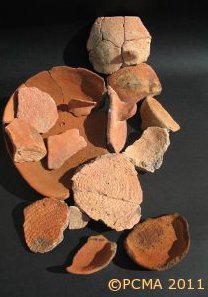
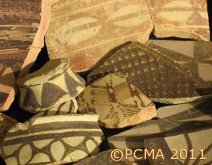
Geomorphology of the site’s vicinity
A small-scale geological survey of the Bahra region had several aims. One of them was establishing the course of the marine coastline at the time of the site’s functioning. Preliminary results suggest that the distance from the settlement to the seashore was no more than approx. 3-4 km, much closer than today. Another objective was finding possible freshwater sources for the ancient settlement. A study of the drainage system of the area and the reconstructed hydrological conditions in the Ubaid period indicate that the Bahra 1 settlement may have been provided in water by a small s tream (either permanent or temporary, presently a wadi) the outlet of which is situated in the site’s vicinity. Another goal of the geological investigations was finding sources of clay that may have been used for pottery production. Sources of clay of ceramic quality have been located a few kilometers away from the site. However, specialist tests are needed to confirm their usage in the production of the Coarse Red Ware.
A unique burial mound
As mentioned above, the season’s work also included excavations of the large tumulus grave SMQ 49. In its c. 1.3 m deep, sub-elliptical chamber, broaden-ing downwards, the burials of at least 17 people were found. The tumulus had at least three phases of usage, each of which can be associated with different burial customs.
The burials were accompanied by a relatively large number of animal bones, including an almost complete skeleton of an equid. In contrast, the number of small finds yielded by the grave was rather modest. Still, they can be divided into three categories: personal ornaments, tools made of bone and a barbed and tanged arrowhead, as well as ground stone tools (found in the 2009 season).
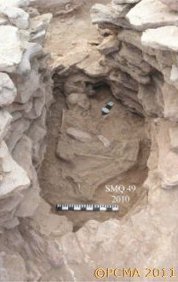
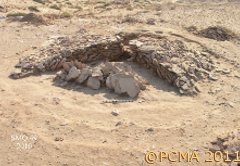
The settlement and the graves – a hint of a connection?
Almost none of the finds from SMQ 49 provide clear evidence as far as chronology is concerned – with the possible exception of the arrowhead. A similar one was found during the same season at the Ubaid-period settlement Bahra 1 (sector SBH 35). However, before further conclusions can be drawn from this similarity, the tools need to be analyzed by a specialist.
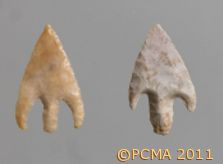
[Text: A. Szymczak]
